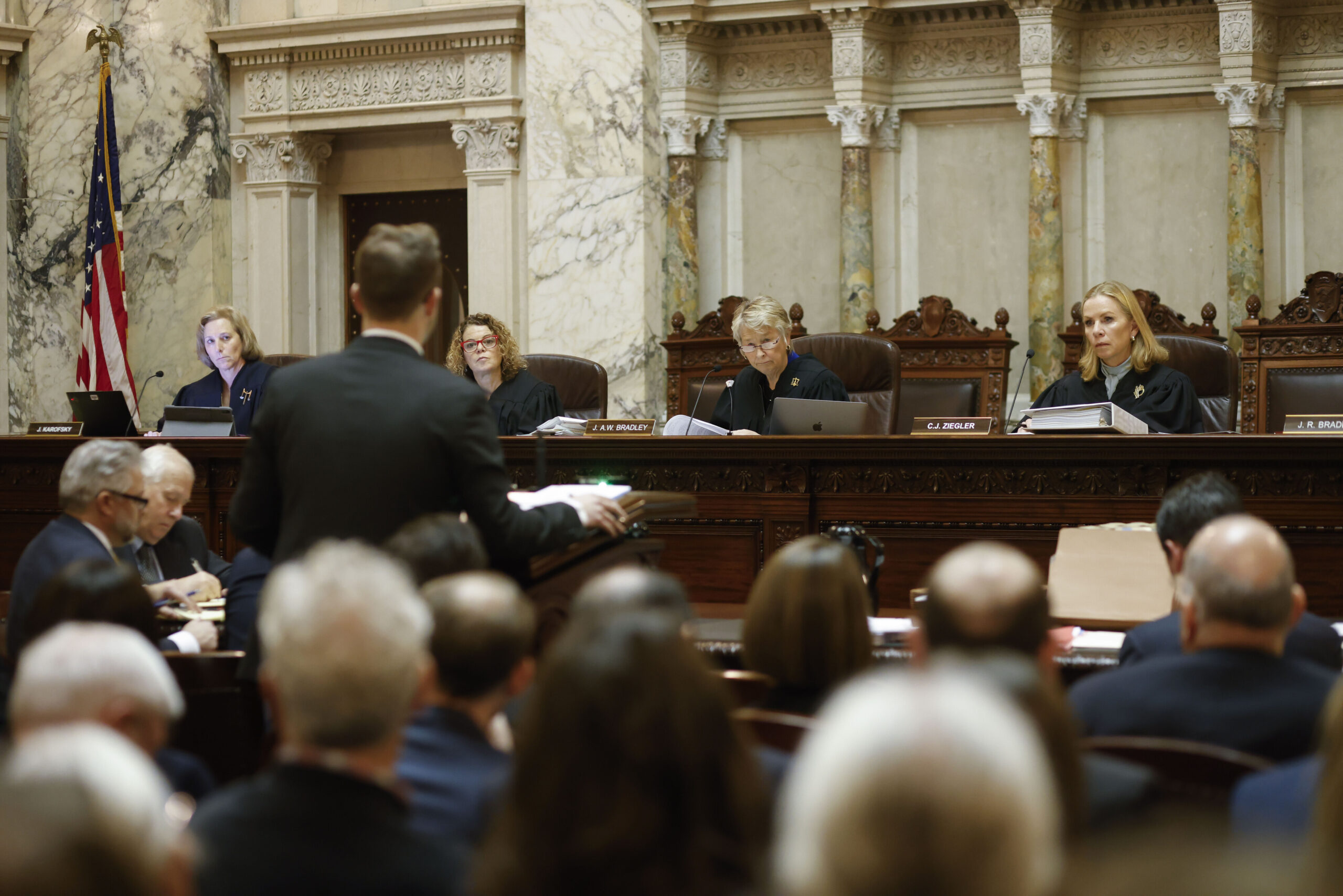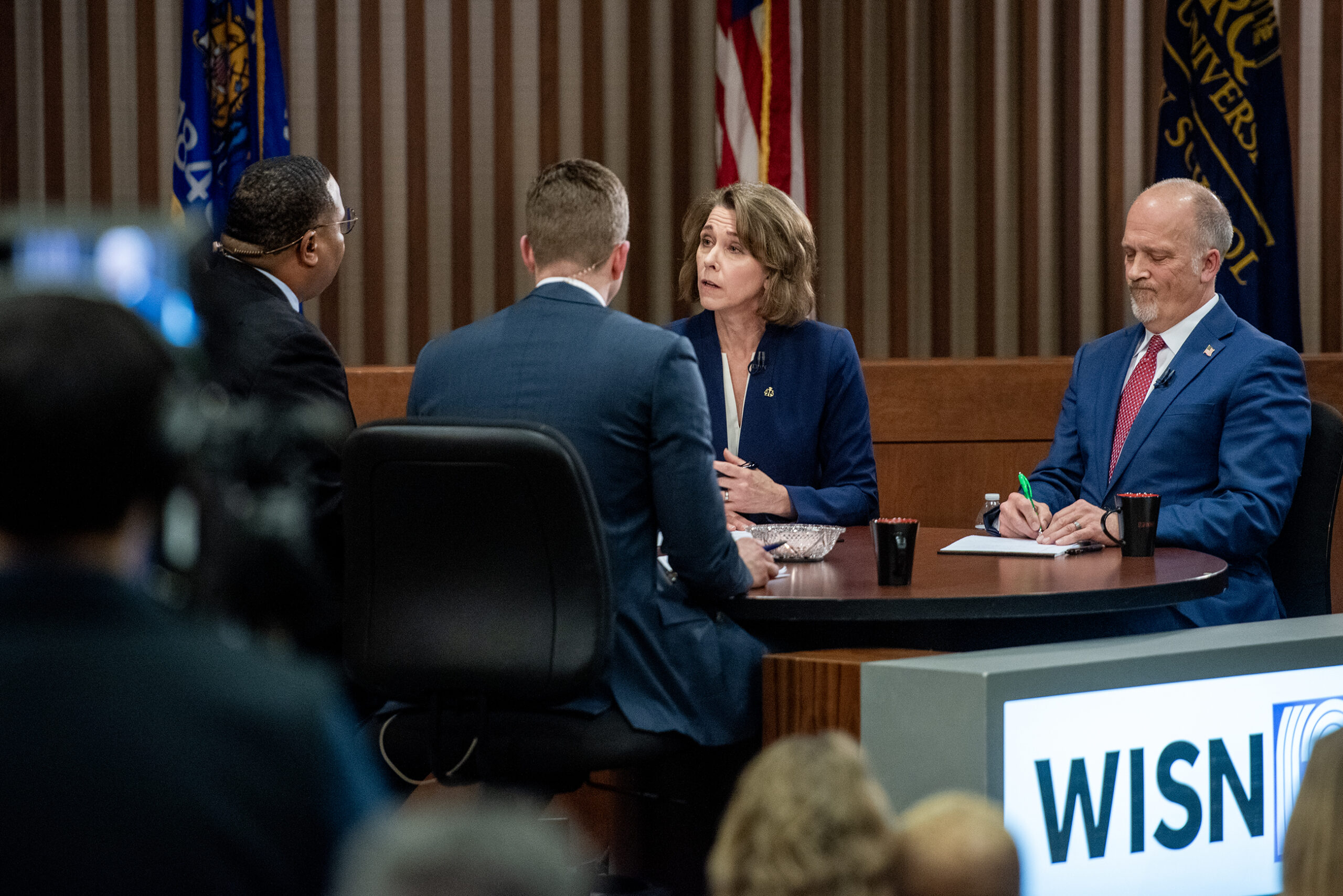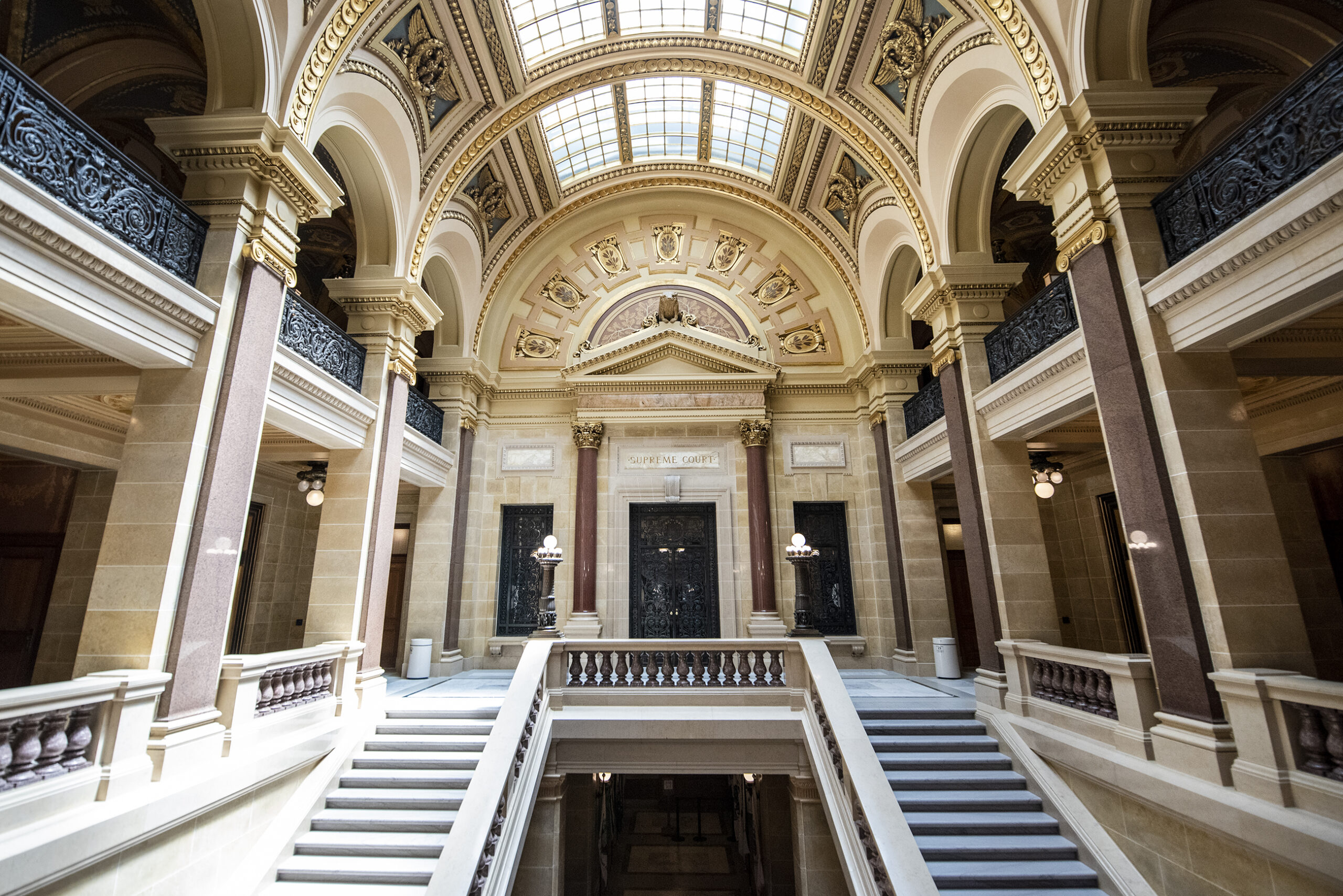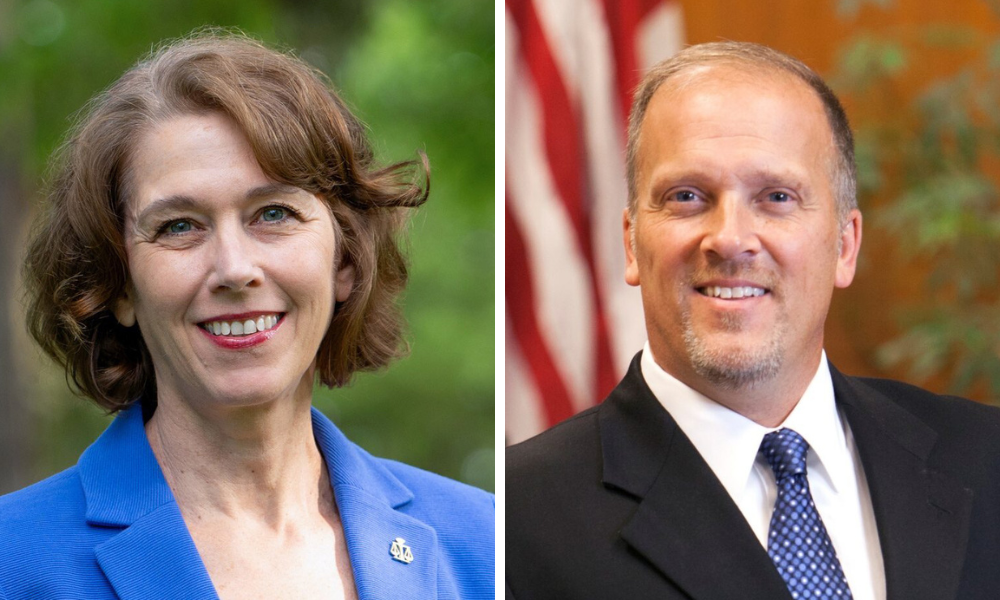Later this spring, Wisconsin voters will be kicking off a six-year spree of annual state Supreme Court elections.
The streak comes after voters selected only one new justice in the last four years.
On April 1, voters will decide between Dane County Circuit Court Judge Susan Crawford and former Republican Attorney General Brad Schimel to replace retiring Justice Ann Walsh Bradley.
Stay informed on the latest news
Sign up for WPR’s email newsletter.
“The winner of this [year’s state Supreme Court election] will either preserve the bare majority of liberal-leaning justices or flip it back to a conservative majority,” said John Johnson, a research fellow at the Lubar Center for Public Policy Research and Civic Education at Marquette University Law School.
Johnson, who wrote about the upcoming cycle for state Supreme Court elections, says abortion rights are one key issue this year.
“A lot of people think that a conservative majority on the court might reinstate that very old law banning almost all abortions in Wisconsin, wheras the liberal court would probably continue the status quo that existed under Roe v. Wade in Wisconsin,” he said.
The most recent state Supreme Court election in 2023 was the most expensive election for a state judge in American history. According to the nonpartisan watchdog OpenSecrets, the campaigns of now Justice Janet Protesiewicz, former Justice Daniel Kelly and their respective supporting groups spent over $45 million in the race.
Protasiewicz, the liberal-leaning candidate of that race, defeated Kelly by over 11 percentage points.
This year’s election is the last chance for conservative-leaning candidates to regain control of the court until at least 2028. Conservative Justices Rebecca Bradley and Annette Ziegler have their terms up in 2026 and 2027, respectively.
On WPR’s “Wisconsin Today,” Johnson spoke about the upcoming elections, campaign financing and the ideological balance of the courts.
The following was edited for brevity and clarity.
Kate Archer Kent: Let’s first break down these 10-year terms. Wisconsin held just one Supreme Court race in the past four years. Why is that?
John Johnson: We have seven Supreme Court justices. They’re elected to 10-year terms, and we only had one in the last four years. That means we’re about to have six more in a row.
We’re going to elect one Supreme Court justice each year from now through 2030. And the way Wisconsin law is set up is you can only elect one Supreme Court justice in a given year. That’s why it’s back to back to back.
KAK: Why are these 10-year terms anyway?
JJ: The idea behind a 10-year term is that you insulate justices from thinking about politics if they’re going to run for reelection. The idea is that 10 years is a long time. Voters will probably forget if they’re mad about any one decision.
And it doesn’t line up with the same sequence of presidential and midterm election years. The idea is that justices should be insulated from partisan politics.
Now, does that actually happen? Not really.
KAK: The 2023 election was the most expensive judicial election in American history. Do you anticipate similar amounts of spending in upcoming races?
JJ: Judging by what’s happened so far, it seems like, yes, that’s the case. Although, I think the spending is so high this year because it will determine ideological control of the court. In a year where it’s not going to have as immediately momentous of an effect on who controls the court, maybe we’ll see a little bit less spending.
But I think the days of sleepy Supreme Court races where the incumbent is just sort of elected almost pro forma, sometimes even without an opponent running, I think those days are gone.





